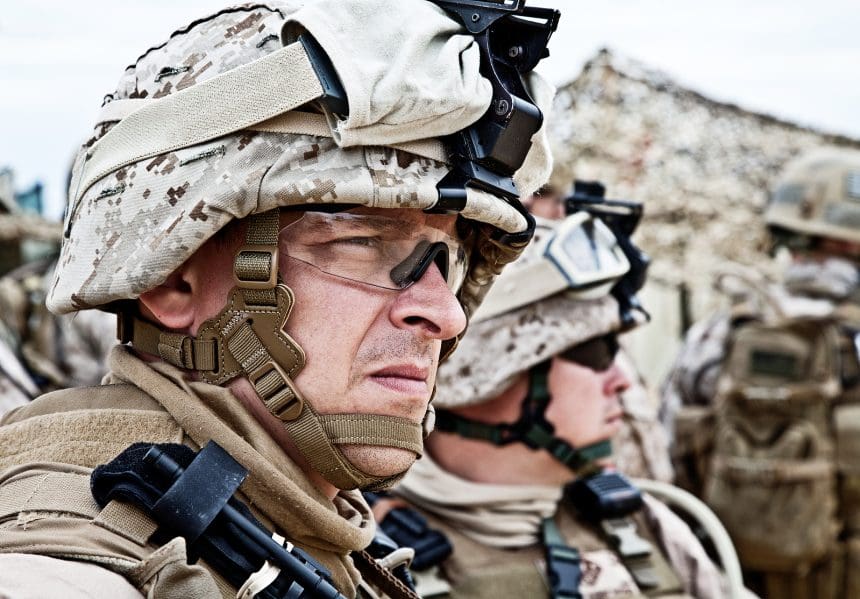U.S. vs China vs Russia: Who Has the Most Powerful Military in 2025?
ST. LOUIS, MO (STL.News) — As global tensions simmer and geopolitical alliances shift, one question continues to dominate international defense discussions: Which country has the most powerful military in 2025? The three nations most often cited in this debate are the United States, China, and Russia—each a nuclear-armed power with strategic interests, global influence, and substantial defense capabilities.
While all three possess formidable forces, a comprehensive analysis reveals that the United States remains the world’s dominant military power, with China rapidly ascending and Russia maintaining its strength through its vast nuclear arsenal.
Defense Spending: A Clear U.S. Lead
The clearest indicator of a nation’s military might begins with its defense budget. The United States spends more on its military than the next ten countries combined, with an estimated $850 billion defense budget in 2025. This massive investment funds cutting-edge technology, global operations, advanced training, and a sprawling network of bases worldwide.
In comparison, China has the second-largest military budget, estimated at over $250 billion this year. China’s focus has been modernization—rapidly upgrading everything from cyber capabilities to naval power, including aircraft carriers and hypersonic missile systems.
Russia, strained by ongoing economic sanctions and the prolonged conflict in Ukraine, allocates roughly $100 billion annually to defense. However, much of its strength lies in its domestic military production and strategic nuclear capabilities.
Nuclear Power: Russia Leads in Warheads
When it comes to nuclear strength, Russia holds the largest stockpile, with an estimated 6,000 nuclear warheads in various states of readiness. This arsenal acts as a deterrent and cornerstone of its national security strategy. Russia continues to invest in delivery systems, including intercontinental ballistic missiles (ICBMs) and submarine-launched ballistic missiles (SLBMs).
The United States, with approximately 5,000 nuclear warheads, maintains a highly sophisticated and modernized nuclear triad—land-based ICBMs, nuclear submarines, and strategic bombers like the B-2 and B-52. The U.S. nuclear program also includes missile defense systems and partnerships with NATO allies.
China, although far behind in raw numbers, is rapidly expanding its nuclear arsenal. Current estimates place its nuclear stockpile at over 500 warheads, but intelligence suggests a sharp increase is underway, with plans to triple that number by 2030 potentially. China’s strategic doctrine has shifted toward strengthening second-strike capabilities.
Naval Strength: U.S. Maintains Global Supremacy
In the realm of naval warfare, the United States Navy consistently outmatches its competitors in both capability and reach. With 11 nuclear-powered aircraft carriers, an extensive fleet of guided-missile destroyers, submarines, and amphibious ships, the U.S. Navy is unmatched in its ability to project power globally. Its ability to operate simultaneously across multiple oceans gives it a distinct edge.
China’s People’s Liberation Army Navy (PLAN) has the largest number of ships globally—over 370 vessels, including destroyers, submarines, and amphibious assault ships. It now boasts three aircraft carriers, though they are not yet on par with U.S. Nimitz- or Ford-class carriers. However, China’s focus on regional dominance in the South and East China Seas is reshaping naval balance in Asia.
Russia’s navy, once a dominant force during the Cold War, has experienced a significant decline. While still possessing nuclear submarines and several powerful surface ships, maintenance challenges and limited resources have hampered its effectiveness outside regional waters.
Air Dominance: The U.S. Leads the Skies
The U.S. Air Force and Navy together maintain the largest and most technologically advanced fleet of aircraft in the world. From stealth fighters like the F-22 Raptor and F-35 Lightning II to heavy bombers like the B-2 Spirit, American air power offers unmatched speed, stealth, and range. In addition, the U.S. maintains global dominance in aerial refueling, early warning systems, and drone warfare.
China is aggressively modernizing its air fleet, investing in stealth fighters like the Chengdu J-20 and expanding its drone and missile systems. However, training, combat experience, and logistical capabilities lag behind the United States.
Russia fields several respected aircraft, including the Su-35 and the Su-57 stealth fighter, but sanctions and resource constraints have limited production and modernization. Its air force remains regionally potent but lacks global logistics and power projection capabilities.
Cyber Warfare and Space: The New Frontier
Modern military strength isn’t confined to land, sea, or air. Cyber and space capabilities are increasingly pivotal. The United States Cyber Command (USCYBERCOM) leads global efforts in offensive and defensive cyber operations. In space, the U.S. Space Force continues to develop satellite defense, surveillance systems, and next-generation communications infrastructure.
China and Russia are rapidly developing cyber capabilities, with numerous cyberattacks traced back to both nations. China is also expanding its space ambitions, with the development of satellite constellations, lunar programs, and anti-satellite weaponry.
Manpower and Troop Size
China has the world’s largest standing army, with over 2 million active military personnel. Combined with its paramilitary and reserve forces, its human resource pool is immense. This vast force is a key part of its deterrent and response strategies, particularly in the Asia-Pacific region.
The United States maintains approximately 1.4 million active-duty troops, complemented by hundreds of thousands of reserve personnel and civilian support staff. Its focus is on quality, training, and strategic mobility, rather than sheer numbers.
Russia has roughly 1 million active troops, with a heavy emphasis on conscription. However, recent conflicts have revealed challenges with morale, logistics, and equipment quality across its armed forces.
Alliances and Global Influence
Military strength is magnified through alliances. The United States is a founding member of NATO, maintains bilateral defense agreements across Asia and the Middle East, and operates over 750 overseas military bases. This global footprint allows the U.S. to respond to crises anywhere on Earth.
Russia has fewer formal alliances but maintains military cooperation with countries like Belarus, Syria, and Iran.
China is working to expand its influence through the Belt and Road Initiative and increase military cooperation with nations in Africa, the Middle East, and Southeast Asia. However, it still lacks the global military partnerships that define American influence.
Conclusion: U.S. Still on Top, But Challengers Rising
In 2025, the United States remains the world’s most powerful military force, due to its technological superiority, global reach, and unmatched budget. However, China is rapidly gaining ground, particularly in naval and cyber domains. Russia, despite facing economic and logistical challenges, remains a formidable nuclear power and should not be underestimated.
As the world becomes increasingly multipolar, military power will play a crucial role in shaping international relations. The strategic decisions made by Washington, Beijing, and Moscow over the next decade will define not only the balance of power but also the future of global stability.
© 2025 STL.News/St. Louis Media, LLC. All Rights Reserved. Content may not be republished or redistributed without express written approval. Portions or all of our content may have been created with the assistance of AI technologies, like Gemini or ChatGPT, and are reviewed by our human editorial team. For the latest news, head to STL.News.






